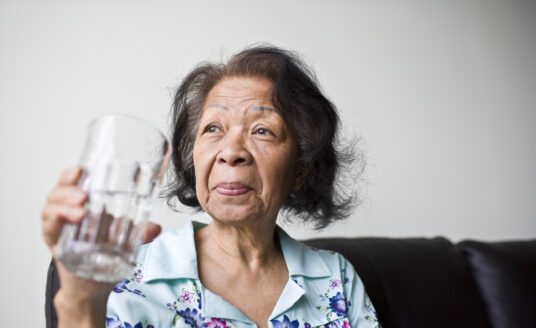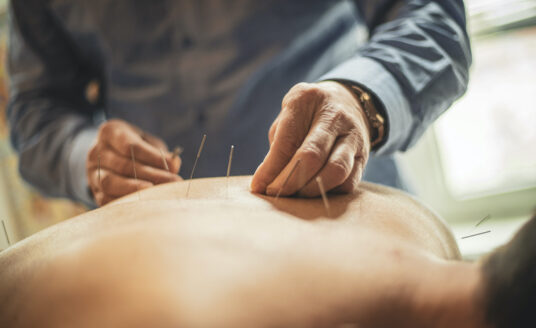Approximately one in three Americans have high blood pressure. And only about half of those people have the condition, also known as hypertension, effectively under control.
The price for uncontrolled blood pressure is steep. It can damage arteries, create dangerous bulges in artery walls (called aneurysms), and lead to coronary artery disease, stroke, heart failure, kidney damage, vision loss, and fluid in the lungs (also known as pulmonary edema).
High blood pressure can be controlled by medications. But like all medications, high blood pressure medications can have side effects, among which include:
- Depression
- Weakness
- Insomnia and sleep problems
- Dry hacking cough
- Skin rash
- Dry mouth
- Loss of taste
- Dizziness
- Headache
- Fluid retention
- Constipation
- Heart palpitations
- Anemia
Luckily, there are several natural ways to control high blood pressure as well. But first, let’s take a look at how to determine whether or not your blood pressure needs to be addressed.
When is Blood Pressure Considered to Be High?
Two numbers represent the force of the blood your heart pumps through your body. The higher number (systolic) is the pressure created during the heartbeat, and the lower number (diastolic) is the pressure between heartbeats. For example, the two numbers in a blood pressure reading may be expressed as 120/80, with the first number being the systolic pressure and the second number being the diastolic pressure.
According to the American Heart Association, here’s how to gauge your systolic and diastolic blood pressure numbers:
Systolic:
- Normal: Below 120
- Elevated: 120-129
- Stage 1 high blood pressure: 130-139
- Stage 2 hypertension: 140 or more
- Hypertensive crisis: 180 or more
Diastolic:
- Normal: Lower than 80
- Stage 1 hypertension: 80-89
- Stage 2 hypertension: 90 or more
- Hypertensive crisis: 120 or more
A diagnosis of high blood pressure should be confirmed by a medical professional.
Ways to Control High Blood Pressure Naturally
Before beginning a major change in your exercise or eating habits, please consult your physician. The specific amount and types of nutrients you need, as well as the kind of physical activity you should engage in, are unique to you.
Exercise.
Regular exercise makes the heart stronger and more efficient at pumping blood, helps you lose weight, and decreases stress. It’s recommended that you exercise 150 minutes a week at a moderate intensity level, and incorporate two days a week of strength training. Consistency is the key, as it may take several weeks to notice a change in your blood pressure that is attributable to exercise.
Exercise could include brisk walking, dancing, gardening, jogging, cycling or swimming. Strength training might involve bodyweight exercises, weights or exercise bands.
Lose weight.
If you are overweight, losing just a few pounds can significantly lower your blood pressure by making it easier for your heart to pump blood. The two keys to weight loss are eating healthy foods and staying physically active.
Reduce sodium intake.
Recent research has revealed genetic differences in how people process salt. However, about half of people with high blood pressure have a sensitivity to sodium. Sodium pulls water into your bloodstream, but if there is too much sodium, it pulls in too much water. The increase in water increases the volume of blood in your blood vessels, and more blood equals more pressure.
A sodium intake of 1,500 mg or less a day is ideal for most adults wanting to control high blood pressure. To decrease sodium in your diet, consider these tips:
- Read food labels
- Choose low-sodium alternatives of foods and beverages
- Eat fewer processed foods
- Don’t add salt to your food
- Avoid fast food meals
- Choose fresh cuts of meat instead of cured meat
- Limit sauces, mixes and “instant” products
When purchasing prepared meals, look for those with less than 600 mg of sodium per meal. Check the amount of sodium per serving, as package sizes may include more than one serving.
Eat more potassium-rich foods.
Potassium helps your body rid itself of sodium, which helps you control high blood pressure.
Food high in potassium include:
- Leafy greens
- Tomatoes
- Potatoes
- Sweet potatoes
- Melons
- Bananas
- Avocados
- Oranges
- Apricots
- Dairy
- Tuna
- Salmon
- Nuts and seeds
- Beans
Try the DASH diet.
Consider the Dietary Approaches to Stop Hypertension diet (DASH), which is low in sodium, cholesterol, saturated and total fats, and is high in fruits and vegetables, fiber, potassium, and low-fat dairy.
Eat dark chocolate.
Dark chocolate (70-85 percent cocoa) and cocoa powder are rich in flavonoids, which can reduce blood pressure by signaling the arteries to relax, which lowers the resistance to blood flow. It has also been shown to lower the risk of heart disease. Consume dark chocolate in moderation, as it is loaded with calories.
Drink less alcohol.
Drinking too much alcohol can raise your blood pressure to unhealthy levels. Repeated binge drinking can lead to long-term increases in blood pressure.
Binge drinking is defined as four or more drinks within two hours for women and five or more drinks within two hours for men.
If you have high blood pressure, avoid alcohol or drink alcohol only in moderation. For healthy adults, that means up to one drink a day for women and up to two drinks a day for men.
For this discussion, one drink is considered to be 12 ounces (355 milliliters) of beer, 5 ounces (148 milliliters) of wine or 1.5 ounces (44 milliliters) of 80-proof distilled spirits.
Reduce sugar and refined carbohydrates intake.
Sugar can decrease the flexibility in your blood vessels as well as lead to weight gain – both of which can contribute to high blood pressure. Sugar, particularly in processed foods, is considered a main driver of high blood pressure.
A low-carb diet does typically lower blood pressure. According to the National Institutes of Health, substantial and sustained improvements in blood pressure can be made in a carbohydrate-restricted diet.
Manage stress.
Chronic stress can contribute to high blood pressure. Consider what is making you feel stressed. Take time to relax and focus on aspects of your life you can control. Listen to soothing music or pursue a hobby. Look for support from family and friends, and don’t hesitate to seek professional help.
Monitor your blood pressure.
There are many types of devices you can purchase to monitor your blood pressure at home. Consistent monitoring will give you an idea of how well you are managing your blood pressure. Write down your readings to look for trends and to provide information to your physician at your next appointment.
| Whether in independent living, assisted living, memory care, or skilled nursing, Bethesda offers the right amenities, services, programming, and staff to make every day full of purpose. See for yourself and tour our independent living communities, including Bethesda Barclay House – Clayton, Bethesda Gardens – Kirkwood, Bethesda Orchard – Webster Groves, Bethesda Terrace – South County, Village North Retirement Community – Florissant, and The Oaks at Bethesda Villas – Kirkwood/Webster. |
Want to find out more?
If you’d like to stay up to date with Bethesda Health Group, sign up here to receive our blog and newsletters!
"*" indicates required fields
Related Articles
Want to find out more?
If you’d like to stay up to date with Bethesda Health Group, sign up here to receive our blog and newsletters!
"*" indicates required fields



